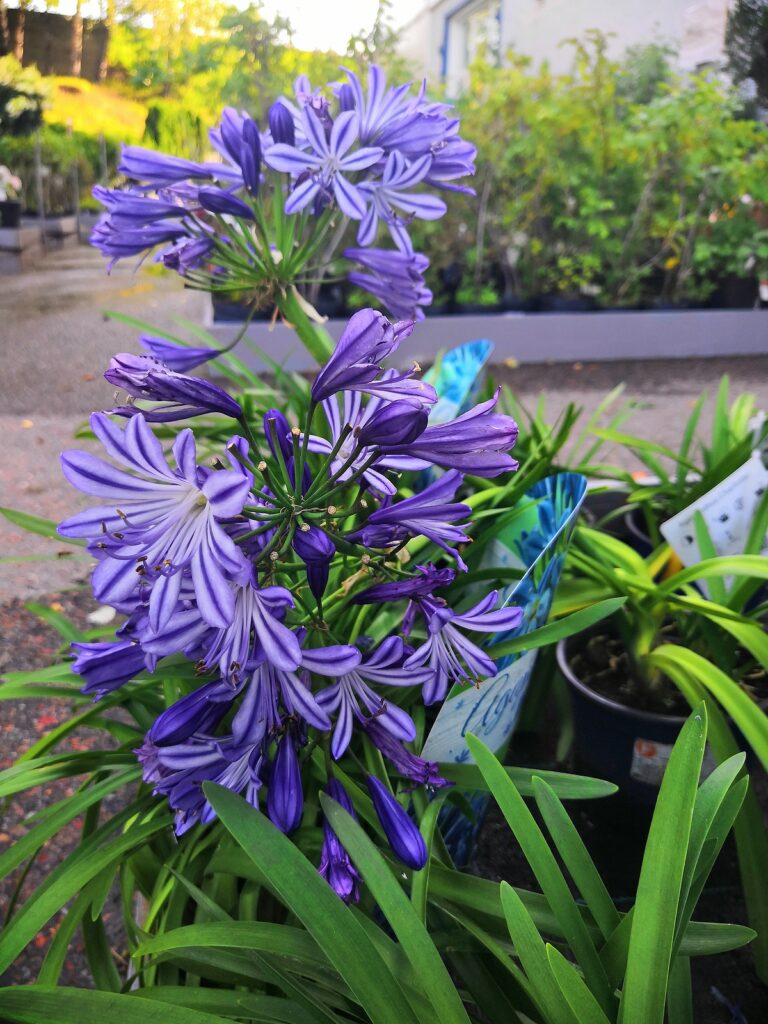Camassia bears loose or dense, terminal racemes of large, showy, star-shaped or cup-shaped blue, purple, or white flowers. Camassia grows from a bulb and does well in moist but not waterlogged soil.
Camassia is native to meadows in the Northwest. It’s a natural choice for a wildflower or meadow garden. Camassia is commonly known as camass or quamash–a name derived from Native American words for the plant. Boiled bulbs–which an reach a half pound or more–were an important native American food.
Flowers rise above clumps of narrow, lance-shaped, basal leaves that can grow 12 to 24 inches long.
There are 5 or 6 members of the Camassia genus; all are bulbous perennials.

Get to know Camassia
- Plant type: Bulb
- Growing zones and range: Zones 4 to 9 depending on the variety
- Hardiness: Hardy to Zone 4
- Height and width: 1 to 4 feet (.3-1.2m) tall and wide depending on the variety
- Foliage: Grasslike basal leaves; leaves are narrow and linear
- Flowers: Tiny, star-shaped, blue or white blooms in loose or dense terminal racemes
- Bloom time: Late spring to summer.
- Uses: Good in wildflower gardens, cutting gardens, or in borders.
- Garden companions: Japanese primrose (Primula japonica).
- Common name: Camass, quamash, wild hyacinth
- Botanical name: Camassia
- Family name: Liliaceae
- Origin: Northern California and Northwest
Where to plant Camassia
- Plant Camassia in sun or light shade.
- Plant Camassia in moist, well-drained, humus-rich soil.
- Plant bulbs where they can remain undisturbed for many years.
When to plant Camassia
- Plant Camassia bulbs in autumn.
- Sow Camassia seeds in a cold frame as soon as they are ripe.

Planting and spacing Camassia
- Plant Camassia bulbs 4 to 5 inches (10-13cm) deep in moist well-drained soil.
- Plant Camassia 6 to 20 inches (15-50cm) apart.
- For best effect, arrange bulbs in drifts of a dozen or more.
How to water and feed Camassia
- Camassia want moist but not waterlogged soil during its growing season; dry soil after leaves die back is not a problem.
- Feed Camassia with an all-purpose bulb food in spring.
How to care for Camassia
- Allow foliage to naturally die back then remove it.
- Mark or map where Casmasia grows to avoid overplanting or digging up bulbs.
Camassia pests and diseases
- Camassia can develop leaf spots and leaf smut.
Camassia propagation
- So seeds in containers in a cold frame.
- Remove bulb offsets when dormant in summer and replant them.

Camassia varieties to grow
- Camassia cusickii, Camass, has steel blue, plumy flowers on 6 to 18-inch racemes; grows to 2 feet (.6m) tall; best in Zones 3 to 9.
- C. leichtliniiI, Leichtlin quamash: grows 2 to 4 feet tall’; bears 6 to 12-inch racemes of creamy white flowers–‘Albla’ has white blooms; cultivar ‘Coerulea’ has dark blue blooms and is 2 to 4 feet (.6-1m) tall.
- C. quamash, Quamash, has bright blue flowers. 10 to 30 inches (25-76cm) tall. ‘Orion’ has darker blue, larger flowers. 30 inches (76cm) tall.
- C. scilloides, western camassia: grows to 30 inches tall; bears racemes of blue-violet flowers.



